(Chinese Factory web site 中文版)
About Us
. Stone Pride International Corporation is a marble and granite supplier with warehouse in Anaheim, California. It’s products include marble medallions, mosaics, borders and other custom stone products.
Our product lines include ultra-
We also supply granite pavers, wall panels, and granite site furnishings and out door granite medallions. We deliver cut-
Newly completed mosaic project:
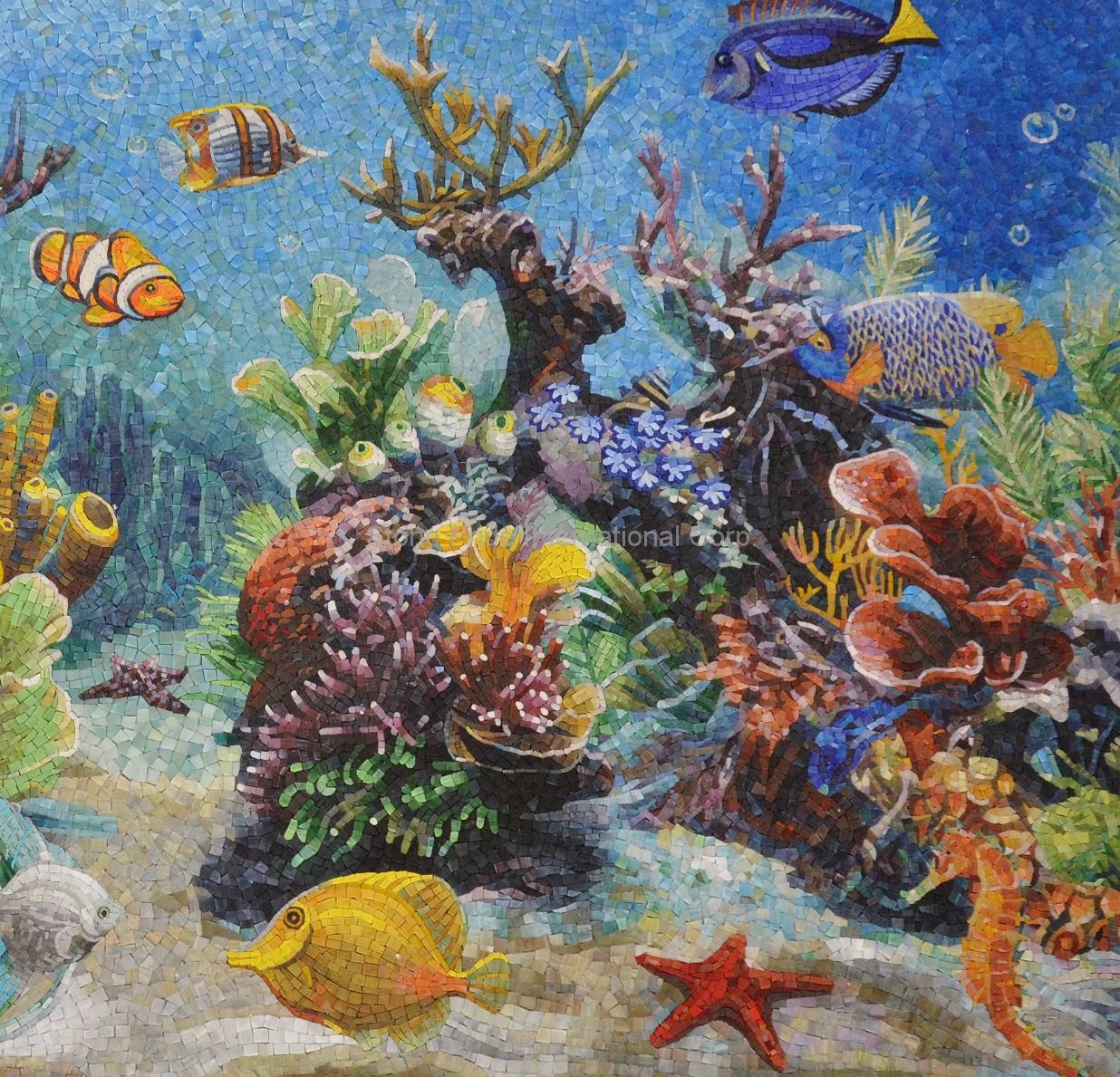
This is a small portion of a newly completed glass mosaic. The owner of the residence, their designer Alexandria Shin (minutiaeconcepts), and Stone Pride design team all contributed to the design.
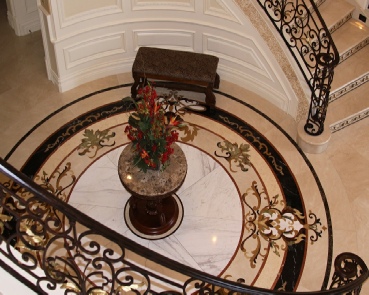
An example of Installed marble medallions, Arcadia, CA
Blogs:
What is Marble Medallion ? (6/5/2017, at https://www.tumblr.com/blog/charleyca )
Marble medallion is made of marble and other stones such as granite and travertine. Different marbles are cut into specific shapes and glued together. It is usually installed on the floor, such as on the floor of entry way or living room. Examples of marble medallions can be found at http://www.stone-pride.com/
History of Marble Medallion: (6/10/2017, at https://www.tumblr.com/blog/charleyca )
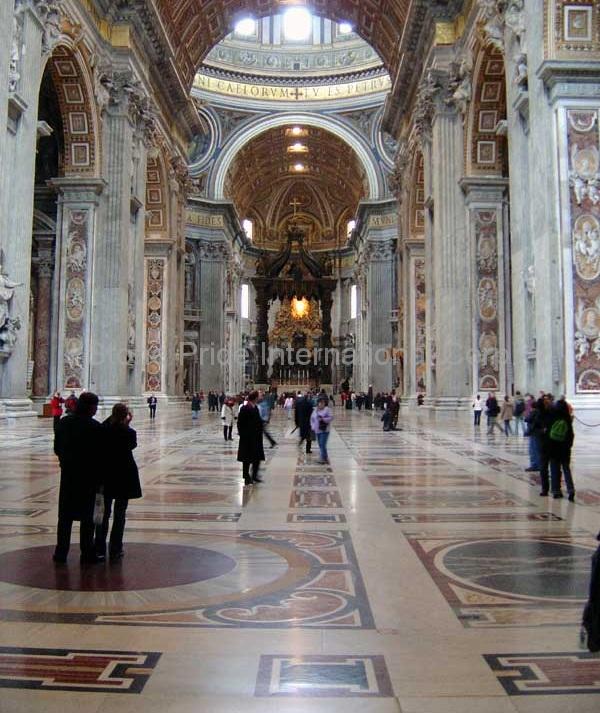
The marble intarsia floor of St. Peter’s Basilica
Marble medallion is also called Marble instarsia. Here is a brief history of marble instarsia from a Wikipedia article: Marble intarsia (opere di commessi), called pietre dura in English for the semi-precious hardstones combined with colored marbles that are employed, is an intarsia of coloured stones inlaid in white or black marble.
Early examples in Florence date from the mid fifteenth century and reached a peak of refinement and complexity in revetments of the Medici Chapel, produced under Medici patronage in the Opificio delle Pietre Dure, which was established by Ferdinando I de’ Medici. Later complex designs and refinement of the art developed in Naples circa the beginning of the 17th century.
The floor of St. Peter’s Basilica in Rome is a particularly notable example of marble intarsia. Later this form of decoration became a feature of baroque interior design, particularly so in the Sicilian Baroque designs following the earthquake of 1693.
(The entire article is at https://en.wikipedia.org/wiki/Intarsia )
History of Marble Medallion (continued) (7/6/2017, at https://www.tumblr.com/blog/charleyca)
Here are some pictures of marble inlays in the Medici Chapel, Basilica of San Lorenzo, Florence, Italy, dating from the 16th and 17th centuries. For more information about the Medici Chapel, see https://en.wikipedia.org/wiki/Medici_Chapel .
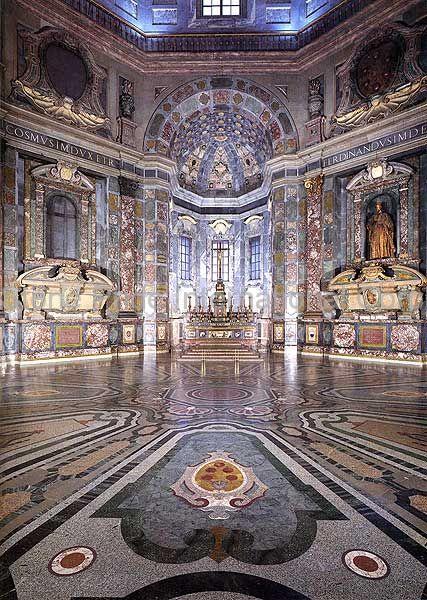
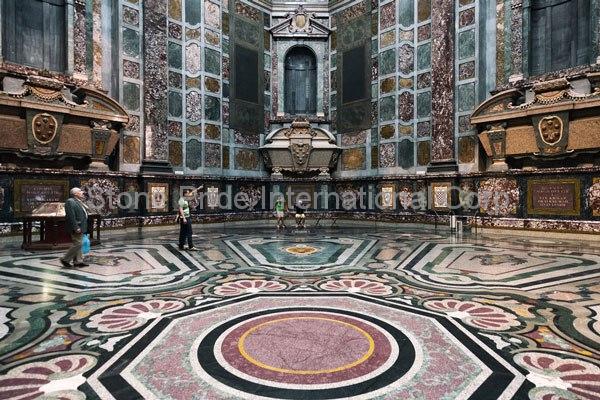
History of Marble Medallion (continued 2) (7/28/2017, at https://www.tumblr.com/blog/charleyca)
A Magnificent late Renaissance antique marble inlaid table top, Roman last quarter 16th century 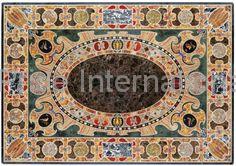
(Source: http://www.sothebys.com/en/auctions/ecatalogue/2013/treasures-princely-taste-l13303/lot.10.html)
History of Marble Medallion (continued 3) (8/24/2017, at https://www.tumblr.com/blog/charleyca)
The Mughal Empire was an empire in the Indian subcontinent, founded in 1526. Mughal craftsmen created many beautiful marble inlay pieces in 17th century. Here are a few examples of marble inlays crated by Mughal craftsmen in 17th century:
From www.gettyimages.ca :
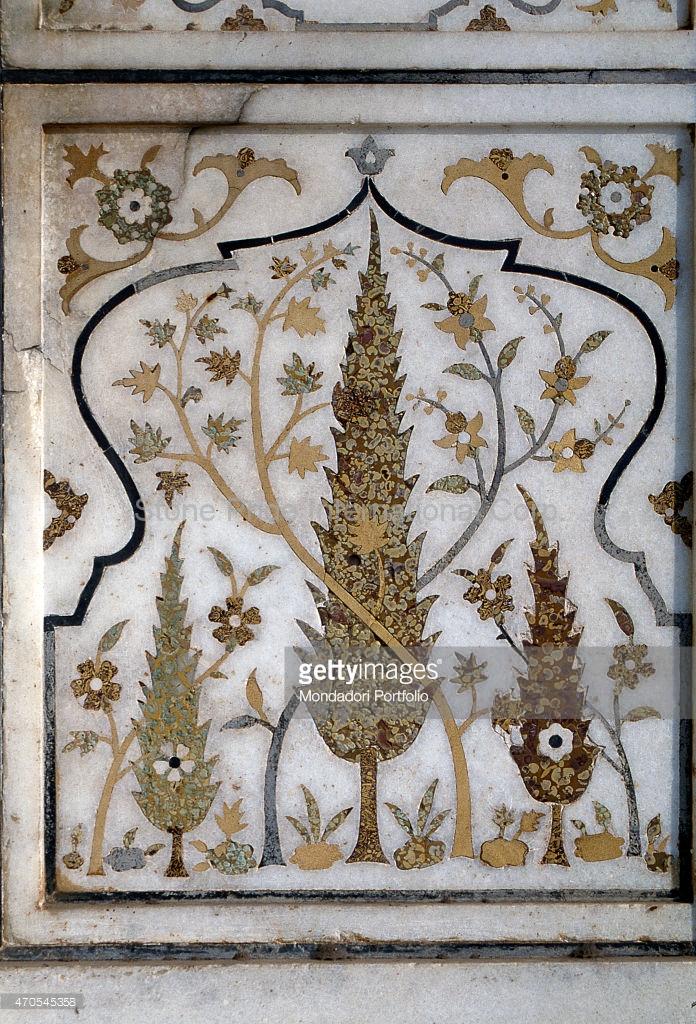
From http://www.sothebys.com/en/auctions/ecatalogue/2016/arts-islamic-world-l16220/lot.147.html :

From https://www.123rf.com/photo_4301913_detail-of-ornate-inlaid-white-marble-of-the-mughal-tomb-i-timad-ud-daulah–17th-cenury-ad-agra-utta.html :
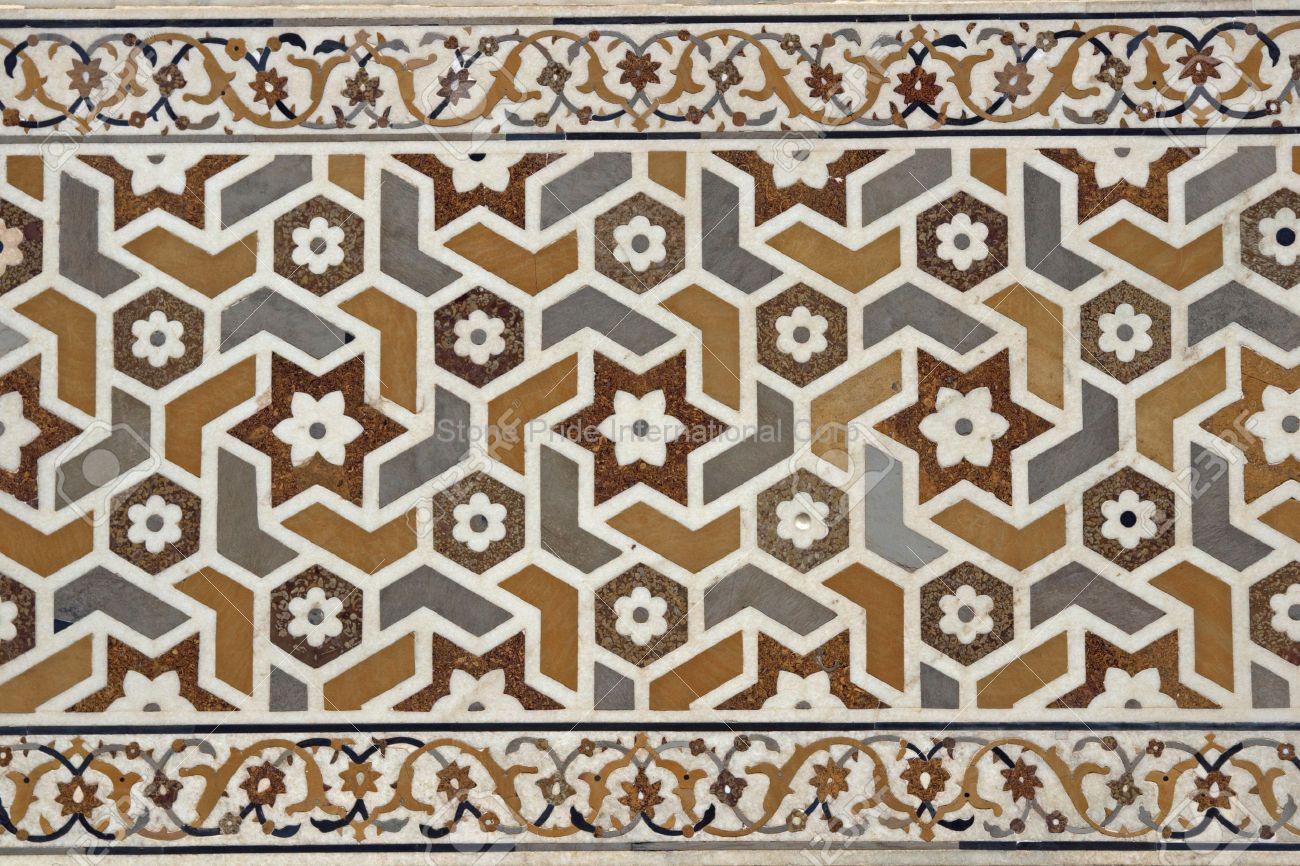
History of Marble Medallion (continued 4) (11/22/2017)
Pietra dura (Italian: [ˈpjɛːtra ˈduːra]) is a term for the inlay technique of using cut and fitted, highly polished colored stones to create images. The stonework, after the work is assembled loosely, is glued stone-by-stone to a substrate after having previously been “sliced and cut in different shape sections; and then assembled together so precisely that the contact between each section was practically invisible”. Here is an example:
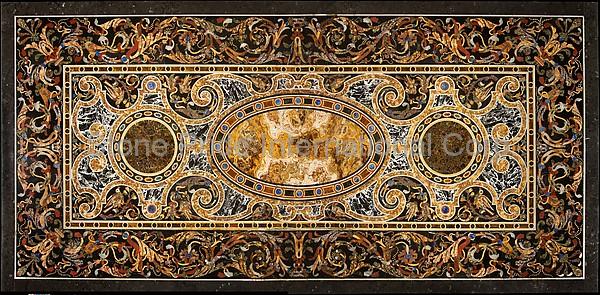
(Date: late 16th or early 17th century, Culture: Italian, Rome, Source: https://www.metmuseum.org/art/collection/search/202713)
History of Marble Medallion (continued 5) (4/15/2018)
Pietra Dura stone and jewel inlay cut in marble frescoes at 17th Century Tomb of Etimad Ud Doulah, Agra, India
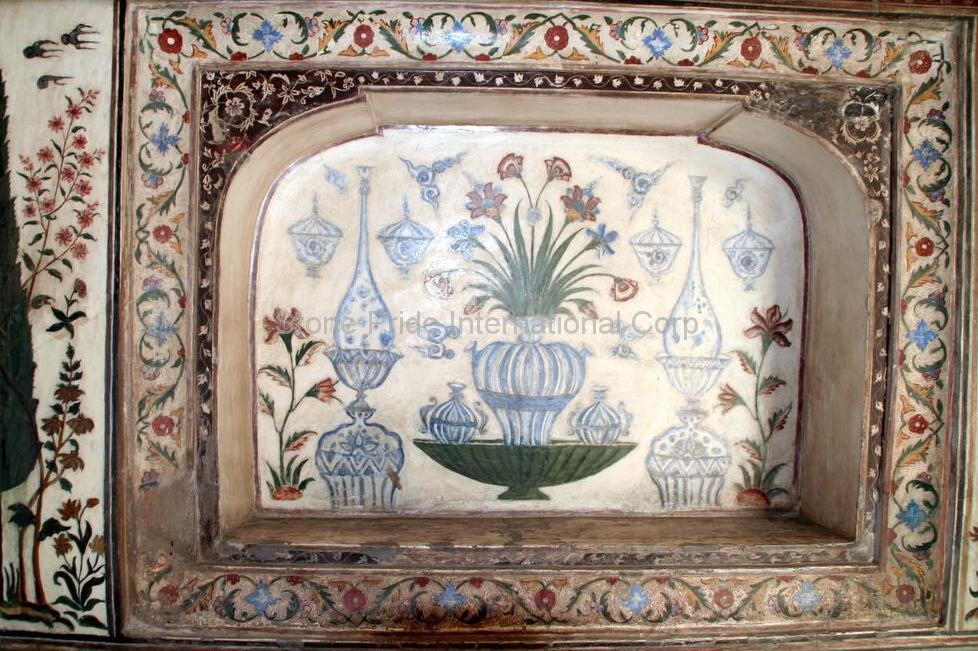
Source: http://www.wikiwand.com/en/Tomb_of_I%27tim%C4%81d-ud-Daulah





